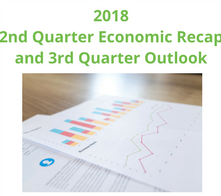As is always the case with a natural product such as cotton, there are important times during the growing season that will determine the outcome of the crop. In many areas of the country, the blooms are on the plant, meaning that the cotton boll will soon appear. Some areas of the US are still looking for timely rainfall, while others only want good heat from the sun and very little rain. Clearly, the weather is out of our control, so let’s break down what the US crop is looking like as some areas of the country, such as the Corpus Christi area of Texas, are beginning the harvest, picking, ginning, and classing their cotton.
When we talk about the state of Texas, looking at regional differences is like analyzing another country entirely. For example, while south Texas has had plenty of rain, west Texas has been in a long-term drought that will affect the yield-per-acre in that area. The Mid-South is set for a record yield in 2018, and the Southeast has had a great growing season as well.
As of this writing, we are looking for Hurricane Florence to make landfall somewhere on the east coast of the United States, directly hitting the Carolinas, while also affecting Georgia and Virginia, where much of the cotton in the US is grown. North Carolina, South Carolina, Georgia, and Virginia collectively planted 2,235,000 acres of cotton in 2018, representing 17 percent of the total acres planted in the US. Depending on where the storm hits and the point in time for the cotton plant, the impact will vary. But it’s safe to say that too much wind and rain is never good for a cotton crop.
With traders anticipating Florence-related damage to the crop, we have already seen an uptick in the ICE Futures price of $.025 cents per pound. To date, 493,000 bales have been harvested and ginned, with the majority coming from the south Texas region. The forecasted yield for the 2018 US crop is in excess of 19 million bales (nine billion pounds). This is a very healthy number for the US cotton market, keeping in line with grower performance in recent years.
Overall, even with continued big production, prices have trended higher in 2018 due to increased global demand for US cotton, known both for its quality and diverse application. The 2018 global production for cotton is projected to be down around three percent while global demand is forecasted up three percent, thereby reducing global stocks by about 10 percent. Even still, global cotton production is forecasted to be 57 billion pounds with consumption at 61 B pounds, leaving global stocks at approximately 37 billion pounds outside of China.
The net effect of slightly decreased supply with higher demand leads to the higher prices as noted in the chart below. Upland Spot Prices are based on the cash sales reporting from seven regions of the daily cotton sales transactions.

Of course, in a global free trade environment, we anticipate that cotton farmers around the world will increase their production acreage of cotton due to the higher market prices for cotton versus other crops at their disposal.
